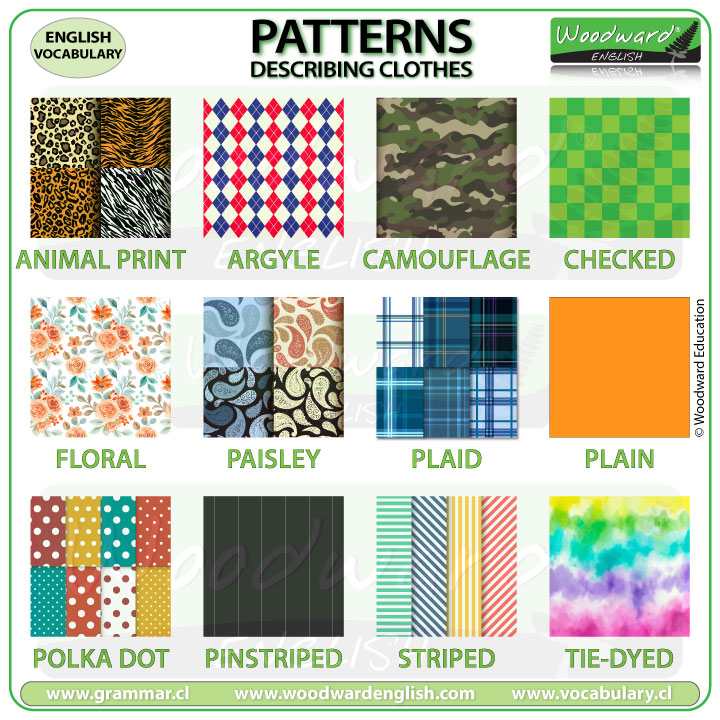Patterns - Describing Clothes
Learn English Vocabulary
Patterns are adjectives as they describe the design or appearance of an item of clothing.
Let’s look at the names of some typical patterns used with clothing:
animal print = made to resemble the characteristic pattern of the skin or fur of an animal such as a leopard, tiger, giraffe, etc.
argyle = a pattern of diamond shapes on a plain background. This pattern is used more with items made of wool such as socks or sweaters.
camouflage = traditionally used by soldiers so they can blend, or hide without being noticed, in their surroundings. Typically, it has shades of green with black and brown.
Sometimes this word is shortened to just camo.
checked = consists of alternating squares of different colors. Sometimes checkered (also written as chequered) is used instead of checked.
checked (is used in British English and American English)
checkered (with the CK spelling, is used in American English)
chequered (with the QU spelling, is used in British English)
floral = decorated with a pattern or pictures of flowers. Sometimes flowered or flowery is used instead of floral.
paisley = a detailed pattern of curved shapes that look like feathers or a teardrop shape with a curved end.
pinstriped = a pattern of very thin (usually white/pale) parallel lines on a darker-colored cloth.
plaid = a pattern of horizontal and vertical bands or lines in multiple colors that cross each other.
Note: Tartan is a type of plaid used to identify a community (or clan), typically of Scotland.
Plaid has the same pronunciation as “played”.
plain = not decorated in any way; with nothing added; without a design. It consists of one color.
polka dot = a regular pattern of round spots of the same size and color on a background of a different color. When the spots are different sizes and/or color, then it is called spotted.
striped = marked with a pattern of stripes which are long lines of color. Stripe (noun) – Striped (adjective)
tie-dyed = consists of tying or twisting portions of the fabric (or clothing) so that parts of it will not absorb the dye. This process is known as tie-dyeing (pay attention to the spelling of this verb)
There are more types of patterns you will see on clothing though these are the most common words that people know and use in English.
Patterns Summary Chart

If you found this English lesson about Patterns and describing clothes interesting or useful, please let other people know about it.
